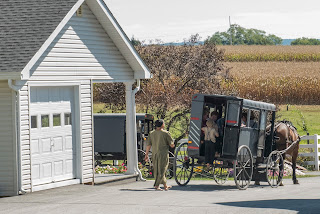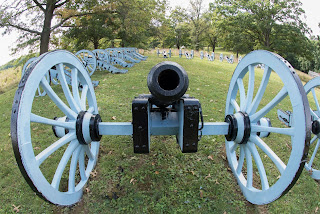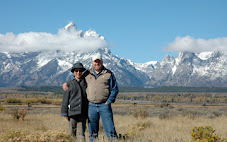Elliot turned 12 on September 7. Normally he would have been given the Aaronic Priesthood soon after that, but John's stake had stake conference, and the next week was the Philadelphia Temple dedication. So his ordination was on September 25. Chieko and I and Misa's parents flew back there for the ordination. And we did a little sightseeing.
We started out on Wednesday, September 21. The first two nights we stayed in the Hyatt House, because I had points left over from when the Hyatt stiffed me on a room in Washington DC that I had prepaid. The last three nights we stayed in the Embassy Suites-Valley Forge, which included a really nice trademark cooked-to-order breakfast.
On Thursday we headed to Lancaster County to see what Amish life is like. They have a lot of corn fields, and the corn was dried on the stalk and ready for harvesting when we were there. This is not sweet corn. This is silage corn. We saw several horse-drawn harvesters at work.
By the way, Avis gave us a Nissan Rogue, which was a nice size, but I didn't care for the way it handled. The acceleration and transmission were jumpy, and when I punched the gas pedal, the car lurched to the right (a front-wheel-drive issue). Horse-drawn vehicles don't have these problems.
The Amish do not drive motorized vehicles (but I believe the Mennonites do), so they ride in these buggies. We went on a buggy ride, and I asked the driver who makes the buggies. He said, "There are 34,000 Amish in this area, and everywhere you go you will run into a buggy maker." (He pronounced it something like "boogy" in his Amish accent.)
This is what a lot of the area looks like: Silos, cows, corn fields and soy bean fields.
Pretty much every house has clothes drying in the breeze. The clothes line runs out from the porch to a pulley high on a post.
Here are the two horses that pulled the buggy we rode in.
Our driver is on the right. The guy in the red shirt is just another tourist like us.
He drove us around some farms as the horses clip-clopped on the pavement. These are soy beans.
He took us to his farm, where he has 30 chickens that lay 25 to 30 brown eggs a day, and he has dairy cows.
This barn is remarkably clean and clean-smelling. There are 149 producing cows (150 stalls with one empty). Other cows are pregnant or between producing cycles. The cows eat a meal made from corn, apple byproducts that come from a cider press business down the road, alfalfa hay, and so on. The meal is on a stainless steel tray. The cows' water comes into a little bowl when the cow presses on a button. And the manure is washed down a trough on the other end of the cow.
This is the milking machine. It pumps the milk into this giant stainless steel drum that holds something like four tons of milk and keeps it cooled to 37 degrees. Land O'Lakes pumps the milk into a truck every other day. The family drinks the milk raw from the tank with 4-percent fat. Most of the machinery is run by diesel. The water well is powered by air, which is compressed using a diesel engine. They also use a lot of propane for heating things like the water heater in the rear of this photo and possibly the cooling unit for the milk tank.
This barn was built in 1860 and has a new addition on one end.
The original beams have no nails, just these wooden pegs.
His (notice I don't mention the buggy driver's name, because I forgot to ask him what it was) 4-year-old grandson is selling cookies to another group of buggy riders. Our group of seven people also bought cookies and homemade root beer or lemonade.
Oh, look: Another picture of Lancaster farmland.
We saw three women mowing their lawn throughout Lancaster County. The first was using a manual rotary mower. The other two had power mowers. Notice the clothes drying and the buggy in the driveway. Some of the homes have wired electricity, and others do not. Quite a few buildings without electrical connections have solar panels on the roof to produce electricity to light the home or business.
Buggies and wagons are parked at the hardware store.
Seeing people riding around in buggies on the same roads with heavy car and large-truck traffic seemed almost movie-like. We had to keep reminding ourselves that this is their life.
We ate at a "smorgasbord" (all-you-can-eat buffet) restaurant that was really good. We had cabbage with pork, corn on the cob, sweet potatoes, broasted chicken, and other good food. I wish I could get hold of their pumpkin pie recipe. It had a very mild flavor.
In the afternoon we headed to Hershey, Pennsylvania, for a tour of Hershey World.
Of course, this was a good stop.
On Friday we drove in to Philadelphia and parked our car in a public parking lot near Reading Terminal Market for $31 for the day. We saw a lot of bikes, bike lanes, bike racks, and bikes that are part of a bike-share program. Forbes named Philadelphia one of the 10 most bike-friendly cities in America.
We met John, Misa, her parents, and Nox at the Reading Market for lunch. This is one of those open markets like Fanueil Hall in Boston or Chelsea Market in NYC, which have a lot of different kinds of restaurants and fresh-fish, baked-goods, and other specialty stores.
Quite a few Amish youth were working in the bakeries, cheese, and other stores.
This guy is chopping Peking duck. He got embarrassed when I took a picture of him eating the last little piece of meat he had just cut. He looked up and said sheepishly, "This is good."
Nope, we didn't buy any of these, but they looked good.
We didn't buy any of these, either.
Everything looked fresh and good.
I assume these people spend a lot of time sitting here on these stools.
Here's an Amish girl working at the fresh-doughnut shop.
We watched them make doughnuts while we waited in line to buy them. I had a bite of Chieko's apple-filled doughnut. Very yummy.
The Philadelphia LDS Temple is right downtown. It was just dedicated on Sunday.
Next we headed over to the University of Pennsylvania, where John works at the University Hospital.
Benjamin Franklin founded the University.
This is the main building, I think, considering Franklin's statue is in front of it.
Then we dropped by the bookstore (a Barnes and Noble-university joint bookstore). I took a break with a cold soda at one of the sidewalk tables while Chieko shopped for a souvenir that she never bought.
Later in the afternoon we stopped by to see the Liberty Bell and Independence Hall. We were here a few years ago with Sara and Jared, so we didn't need to spend a lot of time. Lucky thing, too, because we came too late for a tour of Independence Hall. We did get into one of the last tours of the building where the Continental Congress met.
Independence Hall.
The House of Representatives chambers are on the first floor of the Congress building next to Independence Hall.
And the Senate chambers are on the second floor.
Our 41st anniversary was on Monday, September 26, so we celebrated by eating dinner at the City Tavern, which is where the founding fathers, including George Washington, Thomas Jefferson, John Adams and others, often met before and after official meetings.
The staff here dresses in period costumes, and much of the food is based on recipes from the period.
Chieko had salmon, and I had braised rabbit. The location and setting were very nice, including the harp player on the first floor. The food was so so.
Walking back to the subway from the restaurant was this graffitied building. It's actually a tattoo parlor, so I guess this is like a billboard.
We rode the train and subway around Philadelphia, but they don't really stop many places as in New York, so we also walked a lot.
On Saturday we drove about 2-1/2 hours north to Susquehanna, where Joseph Smith translated most of the Book of Mormon, he and Oliver Cowdery received the Aaronic Priesthood, and both were baptized.
The visitor center here is very new. This is a depiction of John the Baptist conferring the Aaronic Priesthood on Joseph Smith and Oliver Cowdery.
John and his three boys.
Nox sitting on the monument edge.
This is the sugar maple ("sugar bush") grove where Joseph and Oliver were visited by John the Baptist. The exact location is not known.
Chieko and Wells walking through the grove.
This is a reproduction of the Hale's home, where Emma Smith was raised and where she and Joseph lived for a time after they were married.
Emma's father was not happy with Joseph claiming to have gold pates that he would not show to him, so he asked them to leave his home. However, he did sell Joseph this home just a short distance down the road. This is where most of the translation took place. Joseph and Emma lived here until the persecution became dangerous, and they moved to the Whitmer home in Fayette, New York.
Nox is looking in the window of the smaller home while we listen to the missionaries tell the history.
Emma Smith's parents are buried in the cemetery just a short walking distance from their home.
Joseph and Emma's first child lived only a short time (minutes or hours) and is also buried here.
The visitor center has a 1930s copy of the Book of Mormon.
This is the path down to the Susquehanna River.
The spot where Joseph and Oliver baptized each other is not known, but it was somewhere near here in this river. The river used to be quite a bit deeper, especially in the spring.
Here's all the group but me.
Near the town of Susquehanna is a huge stone railroad trestle that was built in the 1800s.
We drove back to Philadelphia and planned to eat on the way, but we never passed a restaurant, so we ended up checking on Yelp and found a Chinese restaurant mixed in with insurance agencies, massage spas, and other small businesses on the first floor of a huge condominium. It was a weird place for a restaurant, but the food was good, and the people were nice. We were the only customers at 9:30 at night.
On Sunday we attended church at the Broomall Ward. John conferred the Aaronic Priesthood to Elliot and ordained him a deacon.
The John Astle family.
The whole party.
The Astle's home with Wells scootering down the walk.
This is their neighborhood. The kids' schools are mostly all within walking distance. For dinner, Misa and John cooked up a shrimp boil, which included large shrimp, small red potatoes, a broccoli salad (made with broccoli we bought at $1 a bunch from an Amish farmer), cabbage salad (also from the farmer), homemade root beer, homemade pie from a place near Susquehanna, and ice cream. We visited most of the afternoon with Misa's parents and her dad's sister's family, who live about four hours away.
In the evening we hunted down a sushi restaurant we had spotted a couple days ago called Teikoku.
The sushi chefs at work.
I had nigirizushi, and Chieko had nigirizushi with sashimi. The food was good, but a bit pricey. Since Monday would be our official anniversary, and we were a bit disappointed with our anniversary dinner on Friday, we considered this our follow-up anniversary dinner.
On the way to the hotel (before dinner, actually) we stopped by Valley Forge and visited a few of the stops. This is Brigadier General Anthony Wayne, who commanded the Pennsylvania Line of the Continental Army. This statue has him facing Waynesburg, a town that would be named for him following the Revolutionary War.
This is a common view at Valley Forge. I had no idea how large the area was. The army consisted of 12,000 soldiers, each organized in regiments by the colony the came from. Each colony also supplied the soldiers with food and clothes. The Connecticut soldiers fared well with plenty of supplies, while the South Carolina soldiers fared poorly. Many men starved, froze, and died, while many others deserted or left at the end of their tour of duty. By the end of the winter, the army had shrunk to 6,000.
The first order of duty was to build cabins. Washington offered a monetary reward for the first cabin completed in each regiment.
They were built from local trees, which I assume cleaned out much of the forest. The soldiers did have to go further into the countryside to forage for food.
Each cabin slept 12 men.
The National Memorial Arch was built in 1917 to commemorate the arrival of George Washington to the encampment.
Inside the arch are many symbols that you'll need to look up for explanations.
A chain across the front of the arch keeps cars out.
The Valley Forge location was selected because it gave the Continental Army space to see whether the British regulars were attacking while letting them also keep an eye on the Brits, who had overrun Philadelphia.
The British regulars never did attack other than when they burned down the forge, where food and supplies were stored near the beginning of the encampment.
Valley Forge was not just a winter layover for the Continental Army. The men had to endure severe hardships, which hardened those who remained. Also, Washington brought in a strict Hessian military commander named Frederick Wilhelm von Steuben, or Baron von Steuben, who taught the men military tactics, drills and discipline. Valley Forge was what turned a bunch of rag-tag farmers into a viable army. The Continental Army was also joined in the spring by many more recruits, who were also trained by von Steuben.
General James Varnum of the Rhode Island 1st Regiment commandeered this farmhouse as his headquarters. The family was allowed to also live in the house at the same time, but their farm became a training ground as it provided the only land with enough open space.
This is George Washington's headquarters. The building today has two docents in period costume, and they welcome visitors to tour the entire house, take pictures, and use flash if you prefer. How refreshing not to have off-limits areas and photography restrictions.
George Washington's office.
The office next to Washington's on the first floor.
The bannisters are original, so George Washington's hands have actually held to this railing.
George Washington ordered a canopy bed for Martha when she joined him at Valley Forge.
The other bedrooms on the second floor housed the aide-de-camps, including Alexander Hamilton, and others who visited.
Another second-floor bedroom.
The attic was also used as a temporary bedroom for visitors or the aide-de-camps when visitors occupied their rooms.
The kitchen is detached from the rest of the building as was the custom when fires provided the primary source of heat for cooking.
Leaving Pennsylvania, which everyone here calls "PA," by the way.
Good trip.






























































































No comments:
Post a Comment